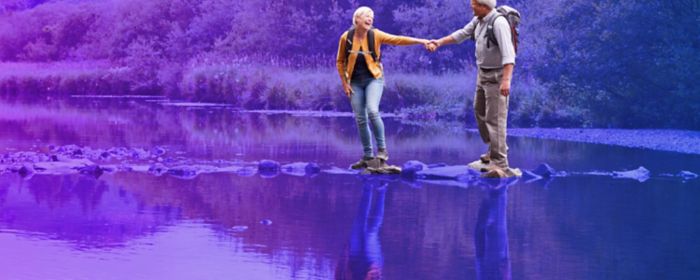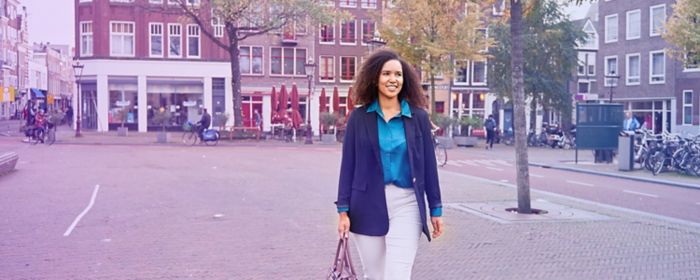The use of 'free' AI applications, such as OpenAI's ChatGPT, has taken off. AI offers many opportunities and possibilities, but also brings several challenges. In this first part of our three-part legal blog series on 'free' AI applications, we discuss the copyright aspects. Who owns the output and how can you best deal with copyright?
What is a copyright and why is it important?
A copyright is the exclusive right of the creator of a work - of literature, science or art - to publish and reproduce that work. The creator may decide whether the work is shown to the public, copied, altered, sold or licensed. In principle, the 'creator' is the natural person who creates the work. Registration of a copyright is not necessary. Protection arises automatically and lasts for seventy years.
What is protected as 'work'?
Copyrights protect 'works' such as drawings, paintings, buildings, and music, as well as texts and software. A work must have its own original character. That is, it must not be derived from the form of another work. In addition, a work must bear the creator's personal stamp. This means that the form must be the result of creative human labour, and thus of creative choices.
The threshold for obtaining copyright protection is low
This is partly due to the European Infopaq ruling. In that case, the European Court of Justice ruled that a fragment of only eleven words can be copyrighted as long as it is the creator's own intellectual creation. Individual words are therefore not copyrightable: "It is only through the choice, sequence and combination of those words that the author may express his creativity in an original manner and achieve a result which is an intellectual creation.” Given this ruling, copyright will soon come into play when AI applications are used. What is the risk? Unauthorised distribution or reproduction of a work is copyright infringement and can lead to bans and high damages. Damages for infringement are usually unlimited and not insurable. In short, there will soon be a copyright consideration to using a 'free' AI application. In the event of any infringement of a third party's copyright, damages can be substantial.
AI applications, ChatGPT and possible copyright infringement
AI applications need many data sources to provide reliable and relevant answers. With ChatGPT, the data is derived from OpenAI's closed database, meaning that the text is not sourced from all the information and data available on the internet, but only from this internal database. Of course, this is something to take into careful consideration when assessing the reliability and applicability of the AI output.
According to the general terms of use, OpenAI's database contains third-party copyrighted works used in the output generated by ChatGPT. The user of ChatGPT is responsible for checking the copyright status of the output and should be aware of the risk of infringement of third-party rights. In addition, ChatGPT's usage policy emphasizes that it is prohibited to use the model for plagiarism, a copyright infringement.
More than 100 million people worldwide already use ChatGPT. There is therefore a good chance that your employees will also use the output of (for example) ChatGPT in their work. This can result in a real risk of copyrighted work being 'distributed' inside and outside your organisation, infringing third-party copyrights. It is therefore very important to make your employees aware of this risk, indicating frameworks within which use is allowed to avoid claims.
Copyright protection on AI-generated text
If the ChatGPT output does not contain copyrighted content, because, for example, the creator's personal stamp is missing, the question is then who is the copyright owner? According to the terms of use of ChatGPT users own all input. Furthermore, the terms of use states: “OpenAI hereby assigns to you al its right, title and interest in and to Output”. If the output of using ChatGPT is not created by a human being, it is in principle free of copyright. After all, the output is generated by the ChatGPT algorithm, in response to a request from the user. This means that, it seems, without further rules, this output can be freely used by anyone. In this context, the World Intellectual Property Organisation (WIPO) outlines two possible scenarios for ownership on the output of AI applications. The first scenario assumes limited human input. No copyright would then arise, and the output would be freely available and freely applicable to all. In the second scenario, it is outlined that the developer of the programme is the rightful owner.
In this regard, we see a third possibility, namely the scenario where the user does acquire a copyright on the output. We explain this using some examples from the United Kingdom, the United States and the European Union.
United Kingdom
In the UK, there is already legislation providing that if a work is generated by a computer or a computer programme, the person who made the necessary provisions is considered the creator of that work. However, there is still ambiguity as to what provisions are considered 'necessary'. Is it the user's input when using a computer programme, such as ChatGPT, or is it the availability of the programme itself? It is possible that the user's input is creative enough to influence ChatGPT's output to such an extent that the input can be considered 'necessary'. Sufficiently creative input in that case could lead to copyrighted output when using AI applications.
United States
The United States consistently holds that a copyright can only be granted to a work made by a human being. As an example, after a monkey accidentally took a selfie, a US court ruled that the monkey could not claim rights because it is not a person. The US Copyright Office then also refused to register claims for works produced by machines without any creative intervention by a human author. In the case of ChatGPT, it can be argued that human creative intervention does exist, as the user determines the terms of his/her input. Indeed, the user can make this input as original and detailed as desired. It is not yet clear whether this is sufficient for a copyright to arise on the output.
European Union
There are also indications within the European Union that a user may be entitled to copyright on ChatGPT's output. At issue before the European court was whether taking a picture is a purely mechanical process without requiring any skill. The court ruled that works are original if they are the author's own intellectual creation and reflect his/her personality, in line with the Infopaq ruling. Also important here are creative choices of angle, lighting and shadow, filter effects and development techniques. In addition, the creation of a photo-worthy scene requires the effort to be in the right place at the right time. These factors are more important in assessing originality than just taking the picture by pressing a button. We can extend this reasoning to the situation of ChatGPT. Indeed, if the input in ChatGPT contains sufficient creative choices, presumably copyright protection can exist on the resulting output. But again, developments in laws, regulations and case law are needed to provide real clarity.
What does this mean for your organisation?
Until the latter happens, the agreements in place between the user and provider - such as OpenAI - will be important to determine who has what right to the output. These agreements are usually in the general terms of use of the provider of the 'free' AI application. It is therefore important that you know what these say and what the implications are for your organisation. This will also need to be included in the policy or frameworks for AI use by employees of your organisation.
The need for awareness, including within your organisation
What is clear is that AI applications offer many opportunities, including in a business context. In using AI applications, it is important to always consider additional legal risks, such as the possibility of copyright infringement. When output from AI applications is adopted and reused, there is a risk that a third party may have copyright on the output, without the user being aware of this. It is important that (re)use of output from 'free' AI applications is monitored and controlled to avoid claims. It is also important that organisations have visibility into their own intellectual property in order to protect it. Use of AI applications will only increase. It is therefore important that organisations have clear policies and frameworks in place to mitigate the additional risks.
Want to learn more?
Digital law is all about both managing the risks and identifying and creating the opportunities that the legal domain offers. Would you like to know more about this? Then contact us, we will be happy to discuss it with you.
Discover more
Contact us
Cagla Tagi
Senior Consultant ,TechLaw
KPMG Netherlands

We will keep you informed by email.
Enter your preferences here.




